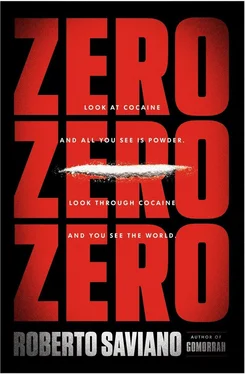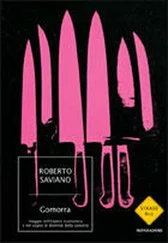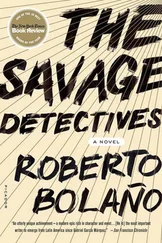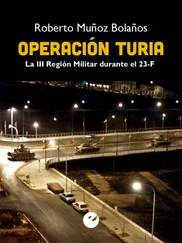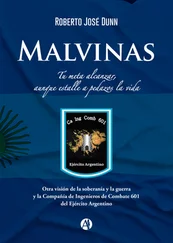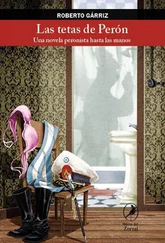• • •
Income from drugs and money laundering has not only sealed increasingly close alliances between terrorist and criminal organizations; it represents a more complex, pervasive, and even more dangerous connection to widespread corruption, making it one of the most elusive links to track. One case in particular illustrates quite sensationally the difficulties that beset financial investigations; the fact that it’s dragged on for more than a decade only makes the point more clearly. On November 15, 1995, an elegant Mexican lady, Paulina Castañon, requests access to her safety deposit box at one of the oldest private banks in Geneva, Pictet Cie. Unfortunately there’s a problem with the vault’s security system, the highly presentable employees tell her. It’s a way to gain time so that the Swiss police, tipped off by the DEA, can arrive with an arrest warrant. The client is the wife of Raúl Salinas de Gortari, brother of the former Mexican president, whose false passport is in her safety-deposit box. There are persistent rumors in Mexico that Raúl has maintained his contacts with all the leading figures of the Mexican and Colombian drug trade. First the DEA and then the Swiss attorney general, Carla Del Ponte, launch inquiries. Years earlier Del Ponte risked being killed along with Giovanni Falcone, with whom she was collaborating on the famous Pizza Connection investigation. Raúl Salinas is accused of having pocketed heavy transit taxes on cocaine shipments from just about everyone: the Medellín and Cali cartels; the Mexican cartels that emerged out of the territorial divisions decided on by El Padrino; and perhaps the Gulf cartel in particular. It’s estimated that a total of $300 million ended up in overseas accounts, with about $90 million to $100 million going to Swiss accounts between 1992 and 1994. More specifically, funds were transferred through Citibank Mexico to private bank accounts in their London and Zurich branches, as well as the most prestigious Swiss banks, such as SBC, UBS, Banque Privée Edmond de Rothschild, Credit Suisse, and Julius Baer. The American giant allegedly helped Salinas with these transactions by making the money hard to trace. How? First of all by setting up an account in Salinas’s name at its New York branch. Through Cititrust, an affiliate of Citicorp registered in the Cayman Islands, Citibank set up Trocca, an investment company also based in that fiscal paradise, where Salinas’s patrimony could be kept. To further conceal Salinas’s name, Citibank established another company, Tyler, which became Trocca’s principal shareholder. Then it opened two investment accounts in Trocca’s name, one at Citibank London and the other at Citibank Switzerland. What’s more, Citibank not only allegedly neglected to obtain the client’s bank references and compile a “know your customer ” profile, it even let Raúl Salinas use another name when making transfers. No U.S. document names him as an owner or beneficiary of Trocca, nor does anything link him with the Trocca money that moved from Mexico to New York and on to London and Switzerland.
It was his wife, Paulina, who periodically made transfers from Mexico, and whom the vice president of Citibank’s Mexico division had introduced to his Mexican colleagues as Patricia Ríos. Under that false name, Señora Salinas deposited checks drawn on at least five Mexican banks into her account, so they could be converted into American dollars and transferred to New York. There the money ended up in a so-called concentration account — a deposit account into which capital from various clients and bank branches flows before being sent on to numerous final destinations.
It seems rather ironic that the blow landed in Switzerland, the country most famous for its long tradition of banking secrecy, and where judicial proceedings against Salinas have been in progress for many years. They continued even after Carla Del Ponte became prosecutor for the International Criminal Tribunal for the former Yugoslavia at the Hague, where she investigated the crimes of Slobodan Milošević, and ended in a trial in which the Swiss judge ruled that the Mexican government structures were protecting drug trafficking and that the money could not have originated legally. In fact, it remained frozen in Swiss banks, waiting for the Mexican courts to issue a verdict on the connections between Salinas and the cartels. But there was insufficient proof on that crucial point, and the case was closed. And so, in 2008, Switzerland decided to hand over $74 million of it to the Mexican government, a sum that had grown to $130 million, and to return an additional percentage to third parties who had entrusted their money to Raúl Salinas. And it’s not over yet, because on July 19, 2013, a Mexican federal judge absolved Salinas of the crime of illegal accumulation of wealth. The evidence was insufficient to prove that Salinas’s fortune had been generated through illegal activities.
The problem that emerges from this interminable saga is the frequent lack both of tools of legal recourse and often of interest in going after dirty money, even when the accused is not a notorious member of some criminal organization but an exponent of that elite and that institutional apparatus that is needed to keep the machine of white profit running. Cocaine money first buys politicians and officials, and then, through them, the shelter of the banks.
12. THE CZARS CONQUER THE WORLD
“The Amalfi Coast, Sardinia, the Costa del Sol, Tuscany, Malta, Ibiza. It’s all Russia!” The man who is speaking knows well the difference between Moscow’s penetrating chill and Italy’s refreshing warmth. A Russian like so many others who invade Italy when summer calls for bathing suits and sunscreen. The Russians are everywhere; you see them and automatically you think: Russians, Russian mafiosi…. As if all rich Russians were criminals. But the presence of the Russian mafia — the Mafija with a j —is as powerful as it is complex, difficult to understand and to learn about. We know it through clichés, through tales of jailbirds covered in barbaric tattoos, ex-boxers with broken noses, brutal ex- specnaz, hooligan pushers with eyes shot through with vodka and low-grade drugs. But the Mafija is something completely different. To get your bearings you have to look at the powerful families, observe their strength. Families bound not by blood but by the organization’s common interests. And like all families, they have a photo album. Everything’s in there: the color of the past; faces of distant relatives; snapshots of important moments; places of the heart.
It is not easy to leaf through a Russian Mafija family album, but I’ve tried to do that with the life of one quick-thinking boss, who is known as the Brainy Don. He’s a way for me to understand how big business is linked to big crime. I imagine I saw him countless times in bars along the Italian coast, or drunk at dinner, with other mobsters. Hallucinations? Sometimes you have to go with your hallucinations, so I immerse myself in the story. I have a collection of the protagonists’ photographs with me, a sort of album I’ve put together these past years; I need to start from something I can touch. The Brainy Don. He doesn’t look like a mafioso. Like a Russian, yes, but he could also pass for American, German, Spanish, or Hungarian. At first glance he’s just another elderly, obese gentleman. We tend to think that people who are that slow in their bodies must be so in their minds as well. Harmless. Innocuous. But that’s not true; you have to take a closer look. In the most famous photograph of him he’s holding a cigarette, caressing it with his chubby fingers. He’s not looking at the camera but at some point above the photographer’s head. His shirt and finely tailored vest barely contain his 290 pounds, which press against the fabric, creating pleats and wrinkles. Behind him, a fireplace framed in marble tiles; before him, a laptop and a pair of elegant reading glasses. To complete the picture, an office chair and a transparent ashtray, which suggests that the cigarette he’s holding is not the first of the day. A businessman, rich and powerful, the head of numerous companies that operate in a wide range of sectors. Sure of himself, authoritarian, devoted to his work. With thousands of employees to oversee, budgets to review and approve, important decisions to make. The Brainy Don’s name is Semën Judkovic Mogilevic. On January 20, 2011, Time magazine put him first on its list of Top 10 Real-Life Mob Bosses of all time, followed by Al Capone, Lucky Luciano, Pablo Escobar, and Totò Riina. American and European security agencies consider him one of the key Mafija leaders, the head of the Russian octopus, with tentacles all over the world.
Читать дальше
